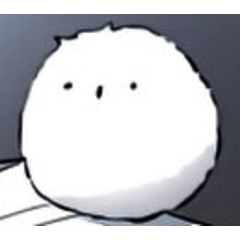Creating a Simple Fantasy Background
Here's my approach to making a simple background! Using these initial steps can help make designing backgrounds a lot faster and easier.
LAYOUT
When you're starting off your drawing, it can be helpful to approach it with the mindset of layers. The objects that are farthest away from the viewer will be overlapped by the things in front of them, and will be the smallest/least detailed. To build up a scene, it can be helpful to approach it in layers based on the closeness of the objects, starting with the farthest and least detailed ones.
The objects closest to the viewer will have a much darker value range and stronger contrast between light and shadow than the objects in the distance. This is because of atmospheric perspective, a phenomenon where the particles in the air that normally look invisible to us are blocking the objects farthest in the distance. In real life, objects that are very far away (think distant buildings over the horizon) are usually less stark and vibrant than the ones closest to us, and are often cool-toned. For illustration purposes, making the objects farthest from the viewer a lighter value helps push it into the background and bring closer objects forward.
When I thumbnail backgrounds, I tend to either use a large angled brush or Clip Studio Paint's "Fill Lasso" tool to quickly block in areas. I make sure to keep each layer of objects (which I usually separate based on value) on its own respective layer, stacked from top to bottom in the order they appear in the drawing (farthest objects on the bottom, closest on the top).
Doing background thumbnails in black and white is really helpful for making sure the values are properly distinguished from each other.
BASE COLOR
When I have my layout figured out, I decide what color palette I want to go with and try to keep the colors roughly the same values that I used in the thumbnail.
When I'm not sure what colors I want to use, I rely on gradient maps to help me choose. Because they link colors to different values and my values have already been placed, this is a really quick and easy way to get base colors for your piece that you can build off of.
To make the values match you original thumbnail exactly, you can set the layer mode of your gradient map to "Color" mode. Otherwise, the gradient map may change them depending on what colors it uses.
RENDERING & OVERLAYS
With your colors chosen, you can go ahead and start rendering! I personally like to start rendering from the closest objects (since they have the most detail and contrast) and work my way back to the background.
Some things to note while rendering:
1. The objects closest to the light source will have the strongest contrast and lighting. In this illustration, the mushrooms closest to the viewer will end up with the weakest highlights because they are farther away from the sunlight than the mountains in the back.
2. The farther-back objects will usually lack detail. Making background objects too detailed and refined will bring them forward and ruin the illusion of depth, so make sure you save the details for only the things that you see up close!
3. You can add some realism to the illustration by adding in depth of field. For this specific illustration, the opening to the cave is the focus point of the piece, so everything in front of it would be slightly blurry to our eyes if it was a real photo. Blurring the closest objects (especially ones that get cut off by the edges of the illustration due to their closeness) can give the illusion of depth. This can also help illustrate strong sunlight or moving objects too!
4. You can use layer modes, gradient maps, or any other tone correcting tool to play around with the colors if you aren't happy with the final product. In this piece, I went back and tweaked the colors using a Color Balance layer and some overlays.
And you're finished!
























Comment